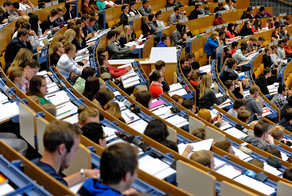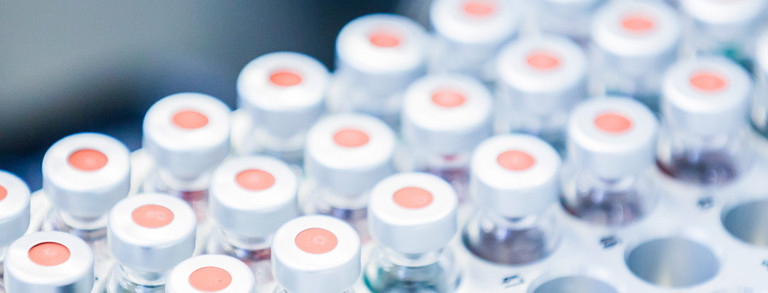Aqueous Two-Phase Extraction of Enzymes
Aqueous Two-Phase Extraction (ATPE) using Aqueous Two-Phase Systems (ATPS) has long been shown to be a viable and promising alternative in the work-up of potent biomolecules (e.g. enzymes, proteins, therapeutics) from fermentation broth. Although ATPE has significant advantages over common separation strategies, such as a high biocompatibility, gentle separation profile due to low interfacial tension, good scalability and high efficiencies, industrial application have not yet been realized. [1, 2]
Description
ATPS consist of two hydrophilic components, termed phase formers, (most likely either polymer – polymer or polymer – salt) dissolved in water above a critical concentration, forming two immiscible liquid phases. State of the Art in developing/identifying ATPS for the purification of biomolecules is based on trial and error screening methods, which are cost- and time-consuming. Therefore, a thermodynamic based modeling approach for the determination of tailor-made ATPS for different biomolecules is required to enable a target-oriented purification. Phase equilibria data, either determined experimentally or modeled applying the ePC-SAFT equation of state [3], is used to determine an initial choice of applicable ATPS based on the molecular interactions of the phase forming components and water. In order to take the interactions of the biomolecules in the ATPS into account, and thus gain access to aggregation propensity and partitioning behavior of the biomolecules, the osmotic virial coefficients B22 (biomolecule - biomolecule interactions) and B23 (biomolecule - solute interactions) are used. Osmotic virial coefficients lower than zero indicate attractive interactions, values higher than zero indicate repulsive interactions.
Using this information a tailor-made ATPS for the purification of industrial relevant biomolecules, optimized towards solubility of the biomolecule simultaneously maximizing the extraction yield, can be obtained.

References
| [1] | P. Albertsson: "Partition of Cell Particles and Macromolecules in Polymer Two-Phase Systems" Advances in Protein Chemistry, vol. 24, pp. 309-341, 1970 |
| [2] | T. Minuth, H. Gieren, U. Pape, H.C. Raths, J. Thömmes, M.R. Kula: "Pilot scale processing of detergent-based aqueous two-phase systems" Biotechnology Bioengineering, vol. 55, pp. 339-347, 1997 |
| [3] | C. Held, T. Reschke, S. Mohammad, A. Luza, G. Sadowski: "ePC-SAFT revised" Chemical Engineering Research and Design, vol. 92, pp. 2884-2897, 2014 |







